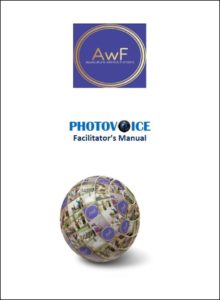 PHOTOVOICE: A HIGH-IMPACT RESEARCH METHOD THAT EMPOWERS WOMEN
PHOTOVOICE: A HIGH-IMPACT RESEARCH METHOD THAT EMPOWERS WOMEN
18 October | Bangkok: The use of photos and comments by research participants to tell their own stories—known as photovoice—is a fast, cost-effective and high-impact research method, making it a valuable tool for gender researchers in fisheries and aquaculture.
Photovoice is the focus of a special workshop at ‘Expanding the Horizons’, the 7th Gender in Aquaculture and Fisheries conference in Bangkok on 18-22 October 2018.
The workshop—‘Photovoice: Researching gender in aquaculture and fisheries though the camera lens’—is being run by Dr. Janine Pierce, an adjunct research fellow at the University of South Australia and a board member of Aquaculture without Frontiers (Australia).
“Photovoice is an increasingly-used research method that gives participants cameras to take photos on loosely worded themes and, usually, to write accompanying comments in a diary.
 “It is explained as a feminist research method, as it is empowering and respectful, giving the chance to tell stories to participants (often women) who may not have had a voice previously to tell their story, and transcends language and education barriers (often experienced by women).
“It is explained as a feminist research method, as it is empowering and respectful, giving the chance to tell stories to participants (often women) who may not have had a voice previously to tell their story, and transcends language and education barriers (often experienced by women).
“Photovoice is powerful because it provides first hand data from community members. Indeed, ‘a picture tells a thousand words’ relates well to photovoice, which is fast and high-impact research.
“The method ensures that no photos that identify people or place without participant consent can be taken or publicized without the full written consent of participants.”
In her workshop, Dr. Pierce will outline the photovoice process, give examples of photovoice projects and describe the different steps in the research process.
“Photovoice projects have been conducted in a number of gender-related projects in many communities, one example being assessing gender roles in oyster farming and grouper fish farming in Vietnam, and the challenging lives of women fish sellers in southern India.
“Photovoice can be used in aquaculture and fisheries to capture stories and findings of projects, to identify issues, to use to accompany grant proposals and to write up into conference papers and research papers. Findings of photovoice projects are usually presented in exhibitions, to inform decision makers of outcomes of projects or issues needing to be addressed,” she said.
All participants will receive an e-version of a photovoice information manual, with accompanying written forms and an electronic diary that can be customized to support individual photovoice projects. There will also be an actual photovoice research project conducted at the conference to give participants a hands-on experience of this research method.
The workshop takes place on Thursday 18 October at 11:00-12:30 at the Asian Institute of Technology Conference Center in hall 1. All media are welcome to attend.
Media contact: Kate Bevitt, katebevitt+oak@gmail.com
